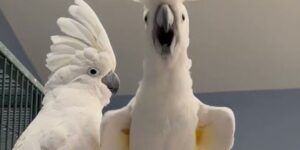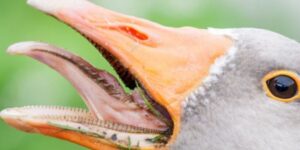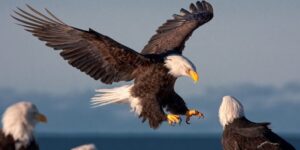Introduction to the Bird life cycle
Birds, like all living creatures, undergo a series of essential stages from birth to adulthood. These stages play a crucial role in their development and survival. Understanding these stages helps us gain a deeper insight into the fascinating lives of birds and the challenges they face at each step. Each phase is a vital part of their growth and prepares them for the next stage in the cycle. In this article, we will explore the different stages in the bird life cycle, from the egg to adulthood, highlighting the physical and behavioral changes that occur. From hatching to fledging, and becoming mature adults, birds navigate a complex and beautiful journey. Along the way, they adapt to their environment and develop the necessary skills for survival. Let’s take a closer look at these stages and the critical role they play in the bird life cycle.
The bird life cycle encompasses the various stages a bird experiences throughout its lifespan. By understanding these stages, we gain a greater appreciation for bird behaviors, adaptations, and their interactions with the environment. Typically, the bird life cycle follows a set sequence of stages that are common across nearly all bird species. Consequently, studying this process helps us understand how birds grow, adapt, and thrive in their habitats.
1. The Egg Stage
Bird life cycle: How Birds Lay Eggs

The first stage of a bird’s life cycle begins with the egg. After mating, birds typically lay eggs, with the female bird laying one or more. These eggs are often carefully protected in a nest. Moreover, birds select nesting sites that offer safety and protection from predators. Eggs are generally laid during the spring or summer months when food is plentiful. As a result, this timing helps ensure the survival of the young once they hatch.
Bird life cycle: Incubation Process
After the eggs are laid, birds enter the incubation stage. In certain species, both the male and female take turns incubating the eggs, whereas in others, only the female handles this task. This stage is crucial, as incubation helps maintain a consistent temperature, ensuring the eggs remain warm enough for proper embryonic development. Consequently, the eggs develop in a controlled environment, which is vital for the survival of the future chicks.
Bird life cycle: Egg Characteristics
Eggs differ significantly in size, color, and texture, depending on the bird species. For instance, some eggs are speckled, while others are plain. Furthermore, the hardness of the eggshell also varies. Most bird species have hard shells, which serve to protect the developing chick inside. As a result, the eggs remain secure and shielded from potential harm, ensuring the proper development of the embryo.
2. The Hatchling Stage
Hatching Process
The second stage of the bird life cycle is the hatching process. This occurs when the chick emerges from the egg. The chick uses a small, hard structure on its beak called an “egg tooth” to break the eggshell. The hatchling is typically born blind, helpless, and covered in soft, downy feathers.
Early Development
During the hatchling stage, the bird relies heavily on its parents for food and warmth. Hatchlings are dependent on their parents for survival. Their primary task is to eat and grow, as their bodies rapidly develop.
Growth and Feeding
Parent birds feed the hatchlings with specially regurgitated food. The food is often rich in nutrients and provides the necessary energy for growth. Both parents usually participate in feeding and protecting the hatchlings.
3. The Nestling Stage
Leaving the Nest
The nestling stage follows the hatchling stage, and this is when the chick begins to grow stronger. As the chick matures, it starts to develop feathers. The nestling gradually becomes more independent and begins to stretch its wings and move around the nest.
Feather Development
One of the defining characteristics of the nestling stage is the growth of feathers. At first, the chick’s feathers are soft and fluffy, but they harden and develop into the bird’s full set of feathers as it gets older. This stage also includes the growth of stronger wings and legs, which will be essential for the bird’s future survival.
Learning to Perch
During the nestling stage, birds begin learning the skills necessary for life outside the nest, such as perching and balancing. These behaviors are crucial for survival once the bird leaves the nest and begins to explore its surroundings.
4. The Fledgling Stage
First Flight
The fledgling stage begins once the bird attempts to fly for the first time. This stage is crucial for the bird’s survival because flight plays a vital role in finding food, avoiding predators, and migrating. Initially, fledglings tend to be clumsy, but over time, they develop strength and coordination, allowing them to fly more effectively. Consequently, this stage marks an essential milestone in the bird’s life, as it transitions toward greater independence and self-sufficiency.
Parental Support
Even after fledging, many birds still depend on their parents for food and protection. During this time, parents may continue to feed their fledglings and guide them in learning how to find food independently. As a result, this stage becomes critical for the fledgling, as it acquires essential survival skills necessary for its future.
Independence
Gradually, the fledgling becomes more independent. It starts hunting or foraging for food and spends more time away from the nest. Although the fledgling gains independence, it is often still seen with its parents as it continues to develop essential survival strategies.
5. The Juvenile Stage
Becoming an Adult
The juvenile stage is a time when the bird starts to resemble an adult. Juvenile birds undergo significant physical and behavioral changes, such as growing adult feathers and refining their flying abilities. They also start to form their social connections and compete for food and territory.
Learning Social Behavior
During this stage, young birds learn important social behaviors, including mating rituals and territorial defense. They may begin to establish their territories and interact with other birds in their species.
Early Mating Behavior
Juveniles may begin to show signs of mating behavior. While they might not yet reproduce, they start practicing behaviors like courtship displays and territorial fights. This is also the time when birds may start migrating or finding suitable habitats for future nesting.
6. The Adult Stage
Bird life cycle: Reproduction and Nesting
In the adult stage, birds are fully mature and ready to reproduce. Adult birds engage in mating behaviors to find a mate. Once paired, they build nests and lay eggs, continuing the cycle. The adult bird’s primary role is to reproduce and ensure the survival of its species.
Bird life cycle: Territorial Behavior
Adult birds often defend territories to secure resources such as food and nesting sites. Territorial behavior includes singing, displays of strength, and even physical fights with other birds to establish dominance.
Bird Life Cycle: Migration and Survival
Some bird species migrate during certain seasons to find food or more suitable climates. Adult birds have the skills to navigate long distances and endure harsh conditions during migration. This is a significant part of their life cycle, allowing them to survive and reproduce in new areas.
7. The End of the Life Cycle: Death
Lifespan
The final stage in a bird’s life cycle is death. Birds’ lifespans vary depending on their species, with some living only a few years and others living much longer. Environmental factors, food availability, and predators all play a role in the lifespan of a bird.
Natural Causes of Death: Bird life cycle
Birds can die from old age, disease, predators, or environmental hazards. Some birds, especially migratory ones, face dangers like storms, predation, or lack of food during their travels. Once a bird dies, the life cycle begins anew with the birth of another bird.
Bird life cycle: Conclusion

The bird life cycle offers a fascinating look into nature’s delicate balance. From egg to adult, each stage plays a vital role in a bird’s survival and development. The early days, starting with hatching, set the foundation for growth, while the later stages shape the bird into a mature, reproductive individual. As birds face numerous challenges and adapt to their environments, they contribute to ecosystems in important ways. Understanding this cycle not only deepens our appreciation for these creatures but also highlights the need to protect them and their habitats. By observing the growth, behavior, and struggles of birds, we recognize the interconnectedness of all life and the importance of conservation efforts. Ultimately, the bird life cycle reflects nature’s resilience and the ongoing process of life, showing how animals evolve and thrive in a constantly changing world.


